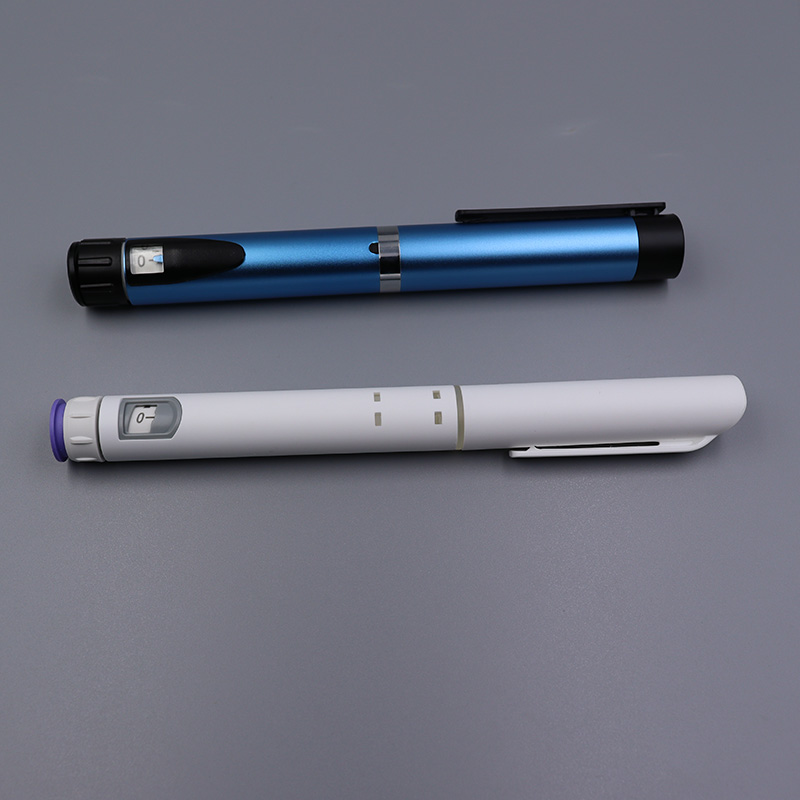Managing diabetes requires accuracy, consistency, and the right medical devices to ensure proper insulin delivery. Among these tools, the insulin pen injector has become one of the most popular and convenient ways to administer insulin. It combines precision dosing with ease of use, making it an essential device for many people living with diabetes.
In this article, we will explore what an insulin pen injector is, its advantages, and a step-by-step guide on how to use it correctly for effective diabetes management.
What Is an Insulin Pen Injector?
An insulin pen injector, often referred to simply as an insulin pen, is a medical device designed to deliver insulin in a controlled and user-friendly way. Unlike traditional syringes and vials, insulin pens come prefilled or refillable, allowing patients to inject insulin more conveniently and accurately.
An insulin pen consists of several key components:
Pen body: The main handle that contains the insulin cartridge or reservoir.
Insulin cartridge: Holds the insulin medication, either replaceable or prefilled by the manufacturer.
Dose dial: Allows the user to select the precise number of insulin units needed for each injection.
Injection button: When pressed, it delivers the selected dose.
Needle tip: A small disposable needle attached to the pen before each use to inject the insulin under the skin.
There are two main types of insulin pens:
1. Disposable insulin pens: These come prefilled with insulin and are discarded when empty.
2. Reusable insulin pens: These use replaceable insulin cartridges, allowing the pen body to be used multiple times.
Insulin pens are widely used in diabetes management because they simplify the injection process and improve accuracy, making it easier for patients to maintain stable blood glucose levels.
Why Use an Insulin Pen Injector?
Insulin pen injectors offer several benefits compared to traditional syringe methods:
Ease of use: Simple design allows for quick and convenient insulin delivery.
Accurate dosing: The dial mechanism helps ensure the correct amount of insulin is injected.
Portability: Compact and discreet, ideal for use at home, work, or on the go.
Comfort: Fine, short needles reduce pain and anxiety during injections.
Consistency: Promotes better adherence to insulin therapy schedules, improving long-term glucose control.
For many patients, these advantages make the insulin pen an essential medical device for daily diabetes management.
How to Use an Insulin Pen Injector: Step-by-Step Instructions
Using an insulin pen correctly ensures effective insulin absorption and prevents injection-related problems. Below is a detailed step-by-step guide to help you use an insulin pen injector safely and effectively.
Step 1: Prepare Your Supplies
Before you begin, make sure you have the following:
Your insulin pen (prefilled or with a cartridge installed)
A new disposable needle
Alcohol swabs or cotton
A sharps container for safe needle disposal
Check the expiration date and appearance of the insulin. If it looks cloudy or discolored (unless it’s a type that should appear cloudy), do not use it.
Step 2: Attach a New Needle
1. Remove the protective cap from the insulin pen.
2. Take a new sterile needle and remove its paper seal.
3. Screw or push the needle straight onto the pen, depending on the model.
4. Remove both the outer and inner caps from the needle.
Always use a new needle for every injection to prevent contamination and ensure accurate dosing.
Step 3: Prime the Pen
Priming removes air bubbles from the cartridge and ensures that insulin flows smoothly.
1. Dial 1–2 units on the dose selector.
2. Hold the pen with the needle pointing upward.
3. Tap the pen gently to move air bubbles to the top.
4. Press the injection button until a drop of insulin appears at the needle tip.
If no insulin comes out, repeat the process until the pen is properly primed.
Step 4: Select Your Dose
Turn the dose dial to set the number of insulin units prescribed by your healthcare provider. Most pens make a clicking sound for each unit, allowing you to easily count the dosage.
Step 5: Choose the Injection Site
Common injection sites include:
Abdomen (stomach area) – fastest absorption
Thighs – moderate absorption
Upper arms – slower absorption
Rotate injection sites regularly to prevent lipodystrophy (thickened or lumpy skin).
Step 6: Inject the Insulin
1. Clean the skin at the injection site with an alcohol swab.
2. Insert the needle into the skin at a 90-degree angle (or 45 degrees if you are thin).
3. Press the injection button all the way down.
4. Keep the needle under the skin for about 5–10 seconds to ensure full insulin delivery.
5. Remove the needle and gently press the site with a cotton ball for a few seconds (do not rub).
Step 7: Remove and Dispose of the Needle
After the injection:
1. Carefully replace the outer needle cap.
2. Unscrew the needle from the pen and dispose of it in a sharps container.
3. Recap your insulin pen and store it properly (at room temperature if in use, or in the refrigerator if not opened).
Proper disposal prevents needle-stick injuries and contamination.
Tips for Safe and Effective Use
Store insulin correctly: Follow manufacturer guidelines for temperature and storage.
Do not share pens:Even with a new needle, sharing can transmit infections.
Check for leaks or malfunctions: If insulin leaks during injection, recheck your pen and needle connection.
Track your doses: Record each dose to help manage your diabetes and avoid missed injections.
Follow medical advice: Always use the dose and injection schedule recommended by your doctor or diabetes educator.
Conclusion
An insulin pen injector is a vital medical device that simplifies insulin delivery, enhances accuracy, and improves comfort for people living with diabetes. By following the correct steps for preparation, dosing, and injection, users can manage their blood glucose levels more effectively and confidently.
Whether you are newly diagnosed or experienced in diabetes management, mastering how to use an insulin pen can make a significant difference in maintaining your health and well-being.
Post time: Oct-13-2025








